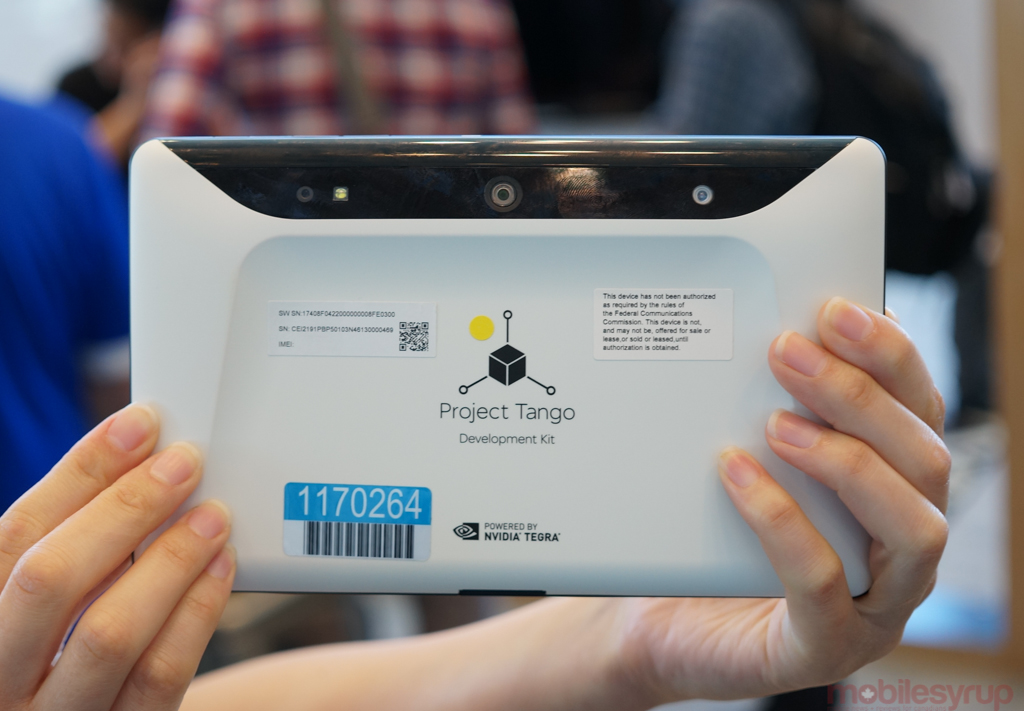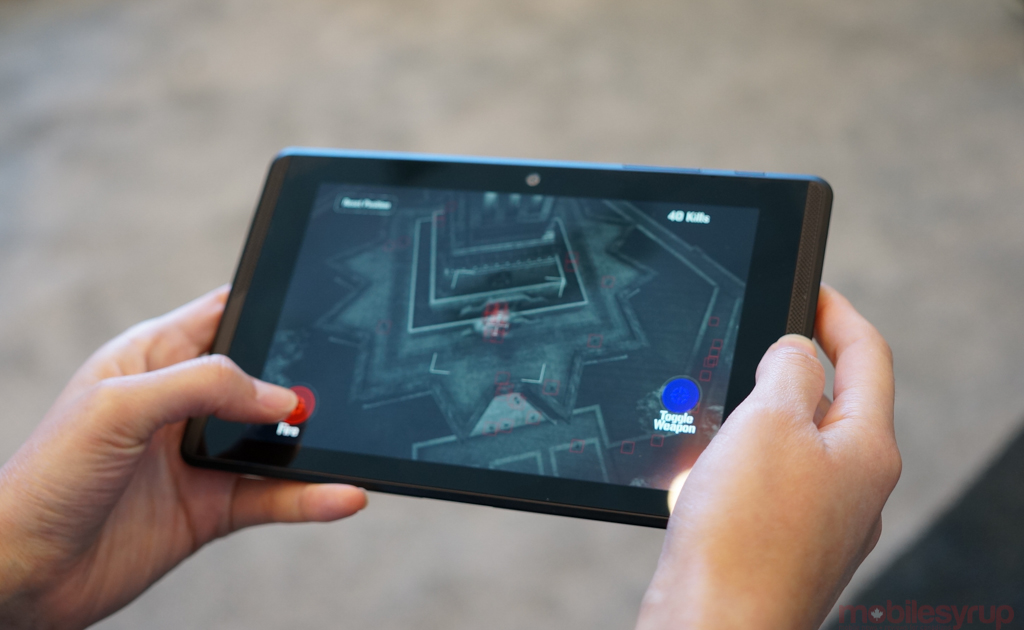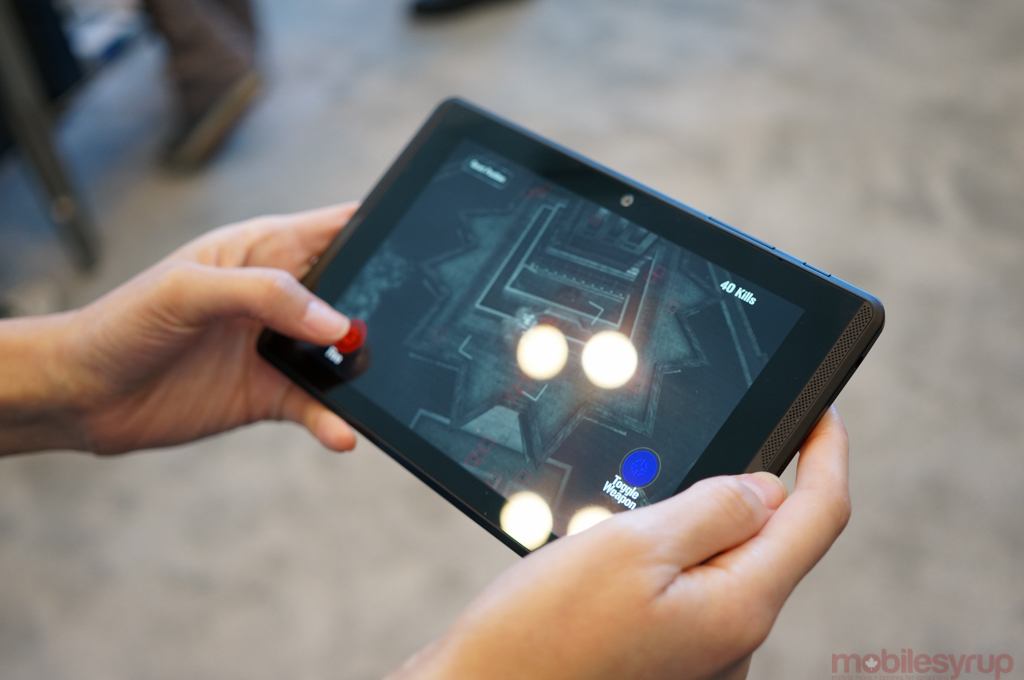
Project Tango is the less immediately “cool” project from Google’s Advanced Technology and Projects division. Ara is all about modular smartphones and the potential that ranges from a $50 WiFi-only device to an $800 waterproof monstrosity designed for reading the oxygen levels in water.
Tango, on the other hand, is all about sensors, and being able to place yourself, via a smartphone or tablet, in a virtually-mapped world to facilitate some amazing things. We got a chance to speak to Johnny Lee, technical program lead at ATAP, to learn more about the project.
Lee is eager to get the project to market, and with LG’s help the first consumer Tango device will hit the market next year. Until then, developers will have a chance to play with the first production models, a small 7-inch tablet complete with multiple cameras and sensors, to create interesting app experiences.
The majority of the demo apps at Google I/O last week were games, which use the tablet’s camera/accelerometer combinations to create real worlds in which users can move around.
The major difference between accelerometer-based games like Zombie Gunship Reality, shown above, and something more sedate but equally enchanting like Motorola’s Windy Day, also created by ATAP, is that Tango allows interacting on the Z-axis as well as X and Y. This lets users crouch down to get “physically” closer to a virtual environment, which could facilitate unique types of gameplay in the future.
The notion of using Tango to more accurately recreate physical environments in virtual spaces will not only help Google improve things like indoor Maps, but users themselves. Think about being able to put a house on the market by walking through it with a Tango smartphone or tablet to create, in real time, a virtual tour that visitors can tour and interact with.
At the end of the day, Tango is not necessarily an end project in itself but a bunch of technologies, developer tools and apps that will eventually be integrated into Android itself. The prototype devices are bulky and a bit homely, but in a few years these extra sensors and cameras will be seamlessly integrated into regular smartphones, letting us accomplish things with four cameras that one just can’t do.
MobileSyrup may earn a commission from purchases made via our links, which helps fund the journalism we provide free on our website. These links do not influence our editorial content. Support us here.




